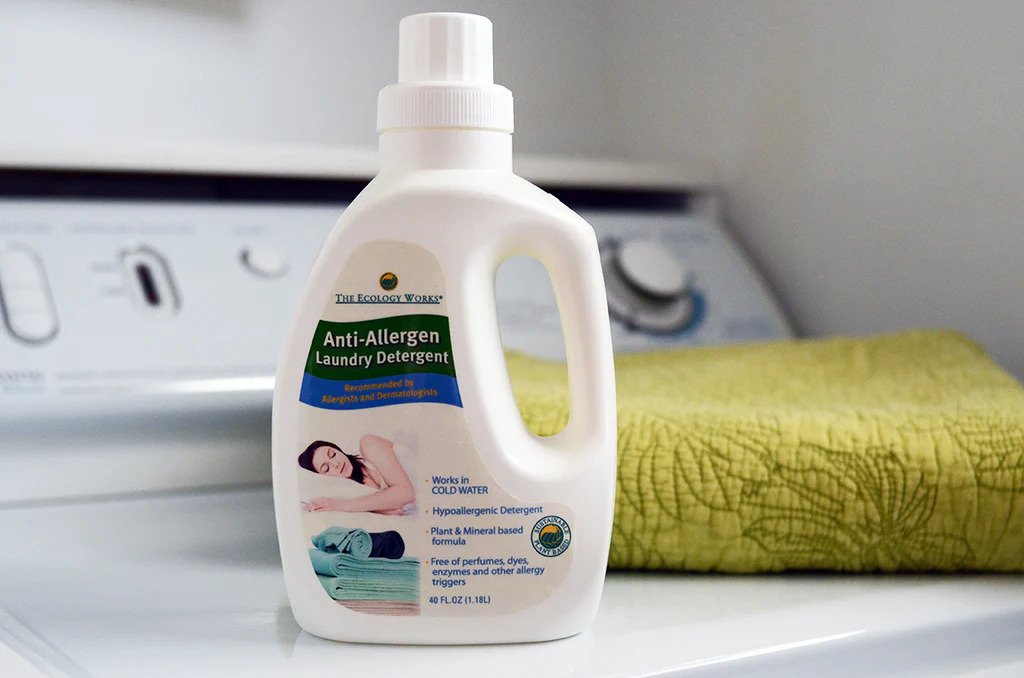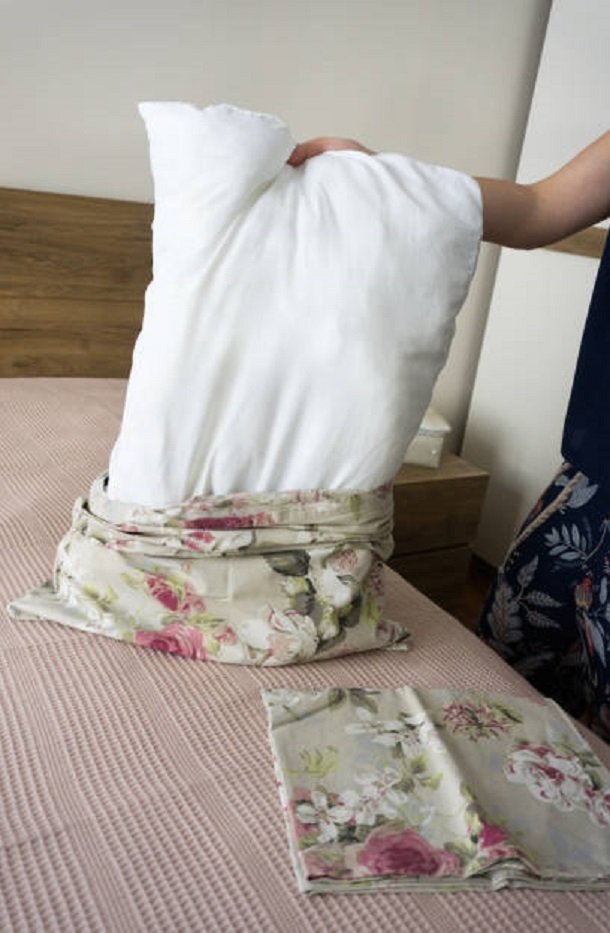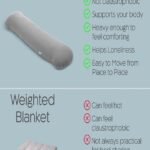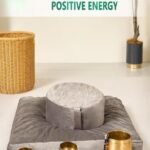Maintaining clean and allergen-free pillows is essential, especially for those sensitive to dust, dander, and other allergens. In this guide, we’ll cover the unique materials of anti-allergy pillows, explain why routine care is vital, and provide step-by-step instructions on how to wash anti-allergy pillows, including both machine and hand washing techniques, drying methods, and ongoing maintenance tips. How to Wash Anti-Allergy Pillows: Step-by-Step Care Guide
With this guide, your anti-allergy pillows will remain as effective as possible, offering you a clean and comfortable sleep environment.
Why It’s Important to Clean Your Pillows
The pillows we use nightly can develop a hidden microscopic ecosystem over time. Infact, after sometimes of use, they can accumulate dust mites that account for as much as 10% of their weight. For those with dust mite allergies, it’s advisable to choose pillows featuring a microfiber membrane, which acts as a barrier against these pests, along with other allergens, bacteria, and viruses.
A study conducted by a health organization “the Airmid Health Group” revealed the following facts about regular pillows:
| Findings | Details |
| Dust Mites | Common inhabitants, whose feces and dead bodies contribute to allergic reactions and respiratory problems. |
| Bacteria | Every pillow examined contained bacteria, including Staphylococcus aureus (golden staph), which can cause a range of infections from mild skin inflammation to life-threatening sepsis. |
| Escherichia coli | Found in several pillows, often associated with diarrhea. |
| Molds | Half of the examined pillows harbored molds such as Aspergillus, a common allergen and asthma trigger, and Candida, which can cause topical infections on the skin and mucous membranes. |
Although the presence of these microorganisms may sound concerning, they are relatively common in our environment too. Proper maintenance and regular cleaning of pillows help keep these microscopic inhabitants under control and away from our daily lives.
Understanding Anti-Allergy Pillows
Anti-allergy pillows are designed with materials and treatments to repel common allergens, ensuring a healthier sleep environment. Here’s a quick breakdown of what makes these pillows unique:
Materials:
Commonly made from synthetic materials like polyester or memory foam that resist allergens.
Covers:
Anti-allergy pillows often come with tightly woven covers to block dust mites and prevent allergen buildup.
Treatments:
Some pillows may be treated with antimicrobial agents to further reduce allergen exposure.
While these pillows resist allergens, they still need regular cleaning to maintain their effectiveness. Routine care can remove accumulated dust, dead skin cells, sweat, and oils, helping your pillows remain both clean and comfortable.
How Often to Wash Anti-Allergy Pillows?
It is recommended to wash anti-allergy pillows every 3 to 6 months to maintain their effectiveness and cleanliness. Regular washing helps to remove and keep away dust mites, allergens, and other debris.
Why Regular Cleaning Matters for Anti-Allergy Pillows
Even with hypoallergenic properties, anti-allergy pillows still collect particles and allergens over time. Regular cleaning offers multiple benefits:
Reduces Allergens:
Washing removes dust, dead skin, and pet dander, preventing them from triggering allergies.
Prolongs Pillow Lifespan:
Proper care helps maintain pillow structure and keeps materials intact, making them last longer.
Maintains Freshness:
Cleaning removes unpleasant odors from sweat and oils, keeping your pillow smelling fresh.
Routine cleaning, along with careful drying and maintenance, ensures your pillows deliver the best sleep experience without compromising health or comfort.
Preparing to Wash Your Anti-Allergy Pillow

Before you start washing, follow these preparatory steps:
Read the Care Label:
Each pillow may have specific washing instructions based on its material. Check for guidance on water temperature, machine settings, or hand-washing requirements.
Remove Pillow Covers and Protectors:
Wash these separately to ensure a thorough clean.
Inspect for Tears:
Look for any small tears or weak seams and repair them, as washing could worsen any existing damage.
Vacuum the Pillow:
Use a vacuum upholstery attachment to remove surface dust and allergens before washing.
Machine Washing Anti-Allergy Pillows

Many anti-allergy pillows are machine washable. Follow these steps to keep your pillows clean without damaging their hypoallergenic properties.
Step-by-Step Guide
Use a Large-Capacity Washer:
This prevents overcrowding and allows your pillow to wash thoroughly. Wash two pillows at a time to balance the load.
Select the Gentle Cycle:
Use a gentle cycle to protect the pillow’s structure and avoid wear on its materials.
Set Water Temperature:
Generally, warm water (30-40°C) is suitable for most pillows. Check the care label to confirm.
Choose a Mild Detergent:
Avoid harsh chemicals and opt for a mild, unscented detergent that won’t irritate allergies.
Add an Extra Rinse Cycle:
This ensures all detergent is thoroughly removed, preventing residue buildup that can attract allergens.
Do’s and Don’ts of Machine Washing Anti-Allergy Pillows
| Do’s | Don’ts |
| Use a mild detergent | Avoid fabric softeners |
| Wash two pillows for balance | Avoid hot water unless specified |
| Add an extra rinse cycle | Avoid bleach |
| Use warm water for effective cleaning | Skip proper drying techniques |
Hand Washing Anti-Allergy Pillows

Hand washing is an effective alternative for pillows that are not machine washable or when you prefer a more controlled cleaning approach.
Step-by-Step Guide
Fill a Large Sink or Tub with Warm Water:
Avoid hot water, which can damage pillow fibers.
Add a Small Amount of Mild Detergent:
A gentle detergent will clean effectively without harsh chemicals.
Submerge and Gently Squeeze the Pillow:
This helps the water and detergent penetrate the material.
Rinse Thoroughly:
Drain the soapy water and refill with fresh water. Repeat until the water is clear.
Press Out Excess Water:
Gently press the pillow without twisting or wringing it, which can damage the filling.
Tips for Hand Washing Memory Foam Pillows
Memory foam pillows require extra care:
- Avoid fully submerging; instead, use a damp cloth to spot clean.
- Gently press out moisture and avoid bending or wringing the foam.
Drying Anti-Allergy Pillows Properly
Proper drying is essential to prevent mold growth and maintain the pillow’s shape and fluffiness. Here’s how to dry your pillows without damaging their structure.
Drying Techniques
Use a Dryer:
Set it to low heat or air fluff. High heat can shrink or damage the materials.
- Add Dryer Balls: These help fluff the pillow and reduce drying time.
- Check Frequently: Remove the pillow once it’s completely dry.
Air Drying:
If you don’t have access to a dryer or want to avoid machine drying:
- Lay Flat in a Well-Ventilated Area: Place the pillow on a clean surface and flip occasionally to promote even drying.
- Allow 24-48 Hours: Full drying may take a day or two, especially for dense materials like memory foam.
Ongoing Maintenance for Anti-Allergy Pillows
Keeping anti-allergy pillows clean between washes prolongs their freshness and effectiveness.
Use Pillow Protectors:
These add an extra barrier against allergens, making it easier to keep pillows clean.
Regular Vacuuming:
Use an upholstery attachment weekly to remove surface dust and allergens.
Air Out Pillows:
Monthly, place your pillows in direct sunlight for a few hours. Sunlight naturally kills dust mites and reduces moisture buildup.
Replace as Needed:
Most anti-allergy pillows last between 1-2 years with regular care.
Environmental Care Tips
For an eco-friendly washing routine:
- Use organic or plant-based detergents that are biodegradable and free from synthetic chemicals.
- Hand wash when possible to reduce water and energy consumption.
- Avoid dryer sheets or fabric softeners, which can introduce synthetic chemicals into the environment.
Conclusion
In conclusion, learning how to wash anti-allergy pillows is essential for maintaining a healthy, allergen-free sleep environment. Regular washing helps keep dust mites, pet dander, and other allergens at bay, ensuring that your pillows remain as effective as possible for allergy relief. By following the proper steps for washing and drying, and incorporating maintenance tips, you can extend the life of your pillows and enjoy consistently clean, comfortable sleep.
Integrating these practices into your routine not only preserves the quality of your pillows but also contributes to better overall health and wellness.
FAQs
Can I machine wash all anti-allergy pillows?
Machine washing is suitable for most anti-allergy pillows, but always check the care label, as some materials, like memory foam, should not be submerged in water.
How often should I wash my anti-allergy pillow?
Washing every 2-3 months is recommended, though you can wash more frequently if you have severe allergies or use the pillow daily.
What if my pillow has a waterproof cover?
Remove and wash the waterproof cover separately, as it may require different care than the pillow itself.
How can I reduce allergens between washes?
Use a pillow protector, vacuum the pillow surface regularly, and air it out in sunlight monthly.
Do I need to replace my anti-allergy pillow?
Yes, replace pillows every 1-2 years for optimal allergen resistance and support.
What if my pillow smells musty?
Ensure thorough drying, as lingering moisture can cause odor. Add dryer balls to help with fluffing and odor control in the dryer.
More to Explore:
Anti-Allergy Pillows Aromatherapy Pillows Meditation Pillows
Child and Baby Pillows Bamboo Pillows Natural Latex Pillows
Organic Cotton Pillows Recycled Material Pillows Pillow Inserts
















